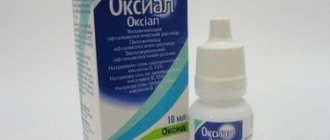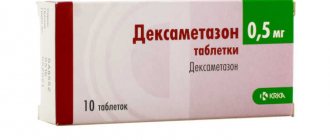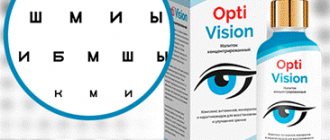Interferon is a protein produced by cells of the immune system to fight various viruses that enter the body from the outside. The pharmaceutical industry produces synthetic interferon (an analogue of a natural compound) intended for the prevention and treatment of viral infections. Interferon preparations are taken orally or used locally in ophthalmic practice. In what cases is interferon prescribed for the eyes? The features of the action and use of the drug are described in the article.
Medicinal properties
Interferon is used if there are signs of damage to the ocular mucous membranes during an acute respiratory viral infection or influenza. Often this treatment is supplemented with antibacterial drugs: antiviral drugs fight viral pathogens, antibacterial drugs eliminate the consequences of infection.
In addition to the ophthalmological field, interferon is widely used in the treatment of cancer, multiple sclerosis, and immunodeficiency conditions.
Pharmaceutical companies offer a wide selection of dosage forms with interferon, allowing for its wide use:
- powders for making a solution for nasal and ocular instillation;
- solution in ampoules;
- eye drops;
- nasal drops and spray;
- dermatological gel;
- liposomes;
- aerosols;
- oral solutions;
- pills;
- rectal and vaginal suppositories;
- implants;
- microenemas.
The medicinal properties of the drug help achieve a number of positive results:
- local immunity is strengthened;
- viral infection is suppressed;
- inflammatory foci are stopped;
- the production of your own interferon is activated;
- the patient recovers much faster.
In addition, the drug helps prevent relapses of the disease. The earlier treatment is started, the more pronounced the effect of the medication will be.
Release form and composition of eye solution
The shape of the drops is very convenient when used in the eye area. This is especially true for small children who do not like to be treated and drink bitter medicine. During the instillation process, the medicinal composition spreads evenly over the ocular surface, without causing discomfort or pain. In this case, the liquid has a local effect without affecting the systemic blood flow.
Drops can be packaged in glass ampoules of 0.05 ml. This dose is intended for single use. Outer packaging is a thick cardboard box. One pack contains 6 ampoules and instructions for Interferon eye drops. You can find the solution in plastic bottles of 5 ml (5000 IU or 10000 IU).
On pharmacy shelves you can find lyophilized powder for preparing a similar solution. It is in glass ampoules (10 pieces of 1000 IU each). Each pack comes with nipagin solvent and instructions on how to use the product. The ready-to-use solution contains 200,000 IU of interferon.
There are two known variations of the drug:
- solution for instillation "Intreferon";
- Interferon alfa-2 eye drops.
Both products are effective and can cope with viral invasions. Their main ingredient - recombinant (genetically engineered) interferon - is similar to its own, produced by the human body. It is produced in laboratory conditions using the achievements of genetic engineering, so even the minimal risk of infection from the donor is eliminated.
Which product is suitable for the eyes?
If necessary, you can use a ready-made drug for the visual apparatus - Okoferon.
For various viral lesions of the visual system, including conjunctivitis, Interferon or Interferon alpha-2 is used. Ready-made eye drops are in the form of ampoules containing 0.05 ml of solution and packaged in 6 pieces. Another available form of the drug is powder for the preparation of drops. The dry substance is diluted with water according to the instructions. There are also eye drops with interferon. They are similar in their effects on the body, indications, prohibitions and restrictions. One of the drugs is “Okoferon” - a powder to which the solvent nipagin is attached. "Ophthalmoferon" has the form of drops. In addition to interferon, it contains diphenhydramine and boric acid.
Indications for prescribing Interferon eye drops
The medicinal solution is able to stop the pathological activity of viruses in the human visual organs. It is prescribed in the following cases:
- conjunctivitis;
- keratitis;
- keratoconjunctivitis;
- hemorrhagic conjunctivitis provoked by enteroviruses;
- keratouveitis;
- herpetic conjunctivitis.
In addition, Interferon eye drops can alleviate the condition of patients with secondary viral infections due to allergies.
Application area
Interferon is an antiviral drug used in ophthalmology for the treatment and prevention of infectious eye diseases caused by viruses.
Interferon for the eyes in ophthalmological practice is used to treat various pathologies of viral origin:
- keratitis, keratoconjunctivitis, keratouveitis and conjunctivitis caused by adenoviruses;
- hemorrhagic conjunctivitis caused by enteroviruses (occurs with damage to the cornea, accompanied by hemorrhage);
- herpetic conjunctivitis, keratitis (more often diagnosed in young children);
- secondary viral infections that occur against the background of allergic inflammation.
Also, products with interferon help reduce inflammatory processes in the eye tissues, activate the production of their own interferon, and increase local immunity (when used externally).
Being a natural analogue of a substance produced in the body, synthetic interferon is characterized by high safety, has no contraindications and does not cause side effects. The drug is prescribed by ophthalmologists for various viral eye infections. But it would be fair to note that the official effectiveness and safety of the use of interferon in ophthalmology has not been confirmed; clinical studies have not been conducted.
Adverse reactions and overdose
Undesirable effects after using the medicinal solution are recorded extremely rarely. Some patients complain of the appearance during treatment of:
- headaches;
- lowering blood pressure;
- increased sweating;
- skin rashes;
- heartburn;
- nausea;
- loss of appetite;
- pain in muscles and joints;
- dizziness;
- difficulty falling asleep;
- fever.
Repeated excess of the recommended portions of the drug can cause hives, redness and peeling, and itchy skin. In this case, treatment should be suspended and consult a doctor for therapeutic correction.
Side effects
Some people experience increased sweating from the drug.
Occasionally, negative reactions may occur such as:
- headache;
- arterial hypotension;
- muscle and joint pain;
- hepatitis;
- sweating;
- liver dysfunction;
- skin rashes;
- fever;
- poor appetite;
- vomit;
- heartburn;
- flatulence;
- nausea;
- constipation;
- increased intestinal motility;
- dizziness;
- nervousness;
- depression;
- confusion;
- dry mouth;
- visual impairment;
- sleep disturbance.
Instructions for Interferon eye drops
The instructions for the drug say that its use depends on the severity of the disease, the patient’s age and diagnosis. It is better to discuss the mode of use with your doctor.
As a rule, the following dosage regimen is prescribed:
- until the condition is alleviated and the inflammatory symptoms are relieved, instill 1 drop at an interval of 2 hours;
- then continue treatment, dropping 1 drop three times a day.
The full therapeutic cycle is 6 days. You should not stop treatment before the end of this period, even if the main symptoms have disappeared and the patient has felt relief. Otherwise, relapses of the disease are possible or the effect of treatment will be short-lived and unstable.
If the doctor recommended instilling 2 drops at a time, then it is better to leave a 5-minute interval between them. After the drop hits the eyeball, you need to make several blinking movements, then close your eyes for 1-2 minutes. This way, the medicinal components will be better distributed throughout the mucous membrane and absorbed faster.
To prepare a solution based on lyophilisate you need:
- Open the bottle with the product.
- Print solvent.
- Carefully pour the liquid into the powder and close tightly.
- Shake thoroughly until all particles dissolve and a clear solution is obtained. The product is ready for use.
Then it is used according to the instructions of the attending physician. The period of use is 12 hours. After this, it is necessary to prepare a new portion of the solution.
If the patient uses contact lenses in everyday life, they must be removed from the eyes before using eye drops.
Instructions for use
Interferon drops are used topically for instillation. Basic requirements of the instructions:
- Patients with lenses should remove them before using the solution.
- Drop the liquid into the eyes 1 time per day in the amount of 1-2 drops.
- For maximum therapeutic effect, when prescribing 2 drops, administer them alternately, observing a time interval of 5-10 minutes.
- After instillation, blink, then close your eyes for 1-2 minutes.
- The course of therapy is 6 days, despite the possible disappearance of signs of the disease earlier.
- The drug in ampoules is stored in a cool, dark place.
- The medicine prepared from dry matter retains its properties for 12 hours.
- For children, pregnant and breastfeeding women, medication doses are prescribed individually by a specialist.
To prevent viral infections, the drug can be administered intranasally.
For preventive purposes, the instructions for use recommend Interferon if there is a threat of infection with ARVI. Drops are administered into the nose 2 times a day with a break between instillations of 6 hours. Treatment with the drug begins at the first manifestations of influenza. The effectiveness of therapy depends on its timely initiation.
Interferon is an immunomodulatory and antiviral agent, but its effect on the body has not been sufficiently studied, so there is no official confirmation of the safety and effectiveness of the drug.
Purchase and storage rules
To purchase Interferon eye drops, you do not need a prescription from a doctor. They are available in any pharmacy chain both in the form of a ready-made solution for instillation and in the form of a powder for preparing a suspension.
It is recommended to store the drug in a cool, dark place out of reach of children. As a rule, it is placed in the refrigerator, where the air temperature is maintained from 2 to 8 degrees Celsius. Unopened ampoules retain their medicinal properties for 2 years from the date of manufacture indicated on the box.
The mucous membrane of the eye is very delicate, so using expired dosage forms is not recommended. They are subject to mandatory disposal.
Drugs with similar effects
In case of intolerance to the components of Interferon eye drops, the doctor can replace them with other medicinal solutions. Pharmacy chains have a whole range of antiviral and immunostimulating agents. Popular analogues for use in the eye area include:
- "Okoferon".
- "Poludan."
- “Oftan Idu.”
- "Aktipol".
- "Ophthalmoferon".
It is better to decide on replacing the drug together with your doctor. He will recommend a substitute, calculate the required dosage and suggest a treatment regimen.
Reviews from doctors and patients
Most reviews about the drug are positive. Medical professionals note that this is an excellent immunomodulator for fighting viral infections. Its effectiveness is confirmed in preventive work during periods of widespread colds.
Patients also give the drug many positive ratings. Among the advantages are its availability and convenient droplet shape. Interferon eye drops act actively, quickly and effectively. They are safe for infants, pregnant women and nursing mothers. Provided you follow all the doctor’s recommendations and the instillation regimen, interferon works quite effectively. At the same time, only a few respondents noted adverse reactions. Basically, it is well tolerated without causing any negative effects.
Young mothers give many positive ratings to the drug. The drops help them cope with viral infections in frequently ill children. Regular use in the initial stage of the disease guarantees quick and long-term results.










